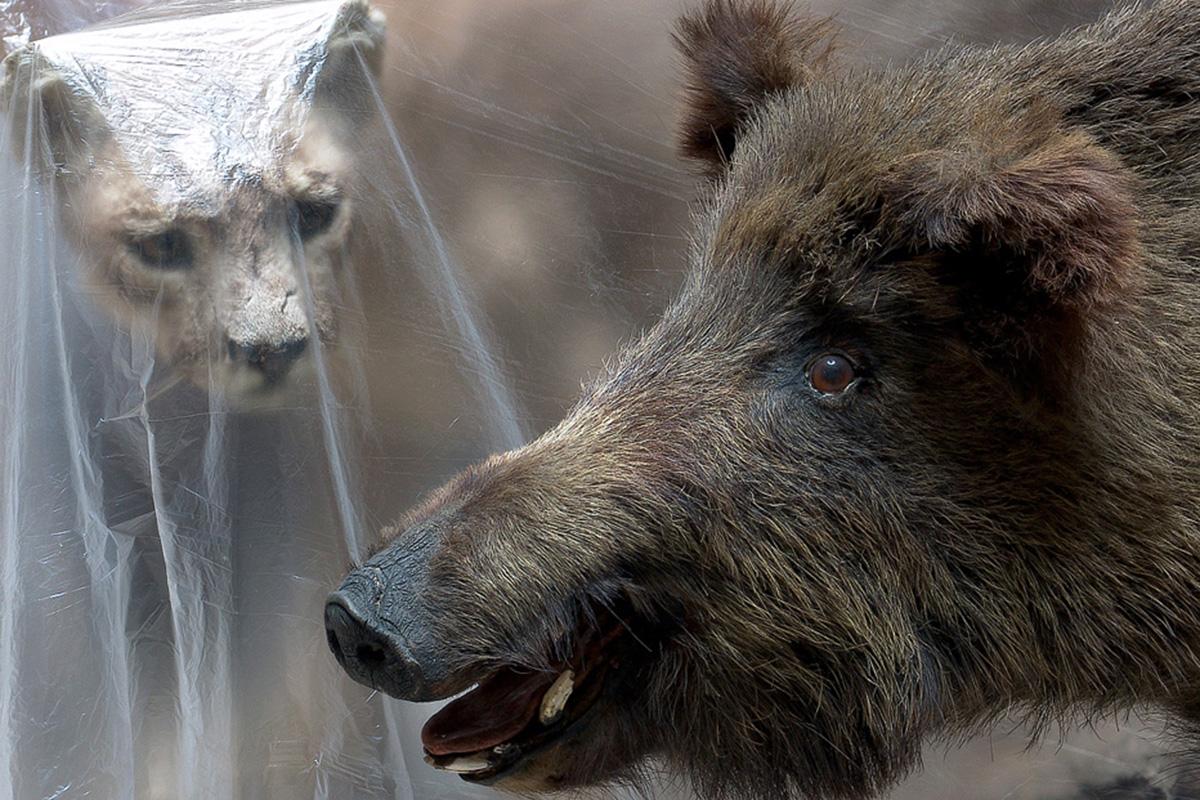How do you look through the eyes of a squid? Find out! The Animaloculomat created by the artist Klara Hobza lets you switch perspectives between animal and human. And if you happen to discover curious lost objects in the museum, don’t be surprised, they might be part of the installation created by writer Monika Rinck. With these two amusing and playful interventions that get the audience involved, the Art/Nature pilot project enters the third round. The two artists share more than just a sense of humour; they both also deal with the serious question as to how realities can be created through media such as language and images.
Launched jointly by the Museum für Naturkunde and the German Federal Cultural Foundation, the Art/Nature project offers contemporary artists the opportunity to create new works that open up new and unusual perspectives on a natural history museum.
A most peculiar machine has landed in the museum’s Dinosaur Hall: the Animaloculomat, or ‘animal ocular-image machine’. This curious photo booth, created by artist Klara Hobza, invites visitors to participate in an artistic experiment. The computer-controlled eye of the Animaloculomat mimics the eye of an animal in its natural environment, and creates portraits from the perspective of different animals. There is very little known about how we are seen by animals or how they perceive us using other senses. With the Animaloculomat, Hobza works in the tradition of scientific and technological images. Her artistic interpretation offers quirky, yet plausible speculation. The artist’s experiments evolve through the media of sculpture, video, performance and drawings. The stories of her works tread the fine line between science, fiction and fantasy. Klara Hobza (b. 1975 in Plzeň/Pilsen, Czech Republic) lives and works in Berlin. Curator: Bergit Arends (London)
In her interventions, writer Monika Rinck works with the relationship between words and things. ‘The Lost World’ is the name she has given to her intervention and installation in the Mineral Hall, where visitors can read the miniature texts from her collection in a Lost and Found and take copies with them. But this is not just about the texts. It is also about the things themselves that are lost and can be found again by museum visitors. This raises questions for everyone who finds something, and for the museum itself, before it puts an object on display. What have I found? What is it called? Who does it belong to? Where does it belong? What system can I use to preserve it? The Lost and Found is open on weekends and holidays, when the competent staff can help you answer these questions. Monika Rinck (b. 1969 in Zweibrücken, Germany) works as a poet and essayist in Berlin. Questions of naming things that she incorporates into her work are always also questions about the realities created by language. Monika Rinck was awarded the Kleist literature prize in 2015. Curator: Cord Riechelmann (Berlin).
For further information go to: http://kunst.mfn-berlin.de/
Exhibition dates: 25 April – 23 July 2017
Literary performances to the intervention by Monika Rinck on weekends and holidays from 11 am to 5 pm with actors Susanne Bredehöft, Thorsten Heidel and Hermann Heisig. Dramaturgy: Christian Filips
